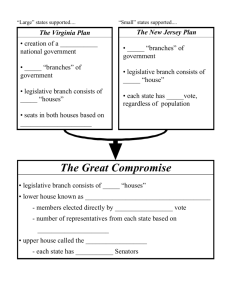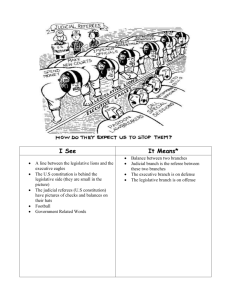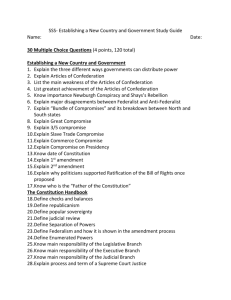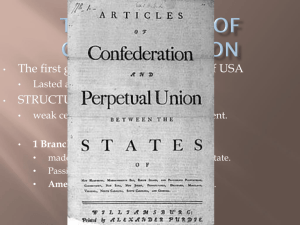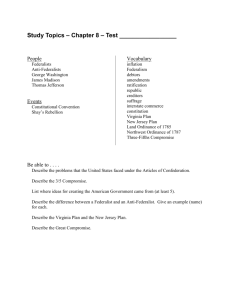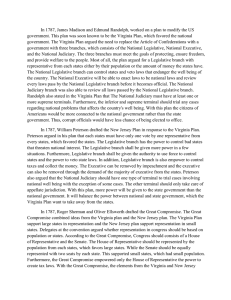Problems with the Articles of Confederation
advertisement
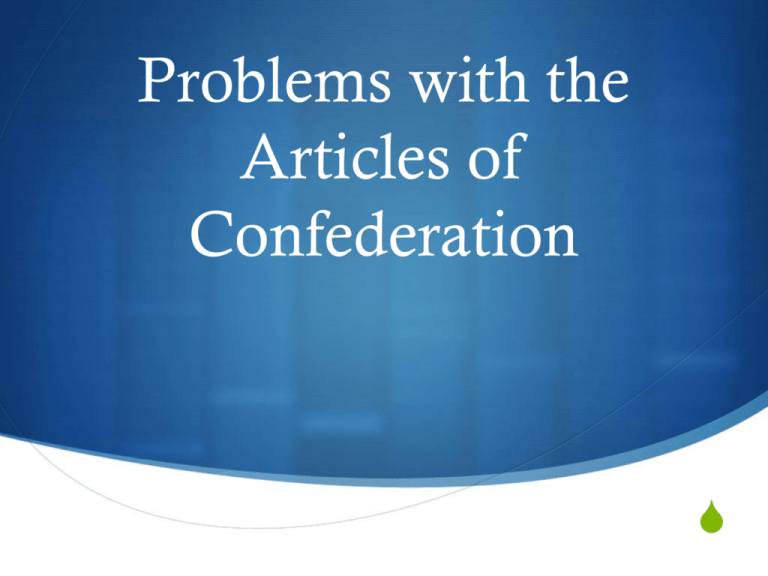
Problems with the Articles of Confederation S S By 1787, the United States was in crisis. The then-current form of government under the Articles of Confederation was mostly ineffective. S Interstate commerce was a major problem S Trade between states S No Executive Branch – No President S No Judicial Branch- No Supreme Court ( They interpret laws) S States had too much power Virginia Plan S The states with larger populations favored James Madison's Virginia Plan. S This plan consisted of a strong national government with three branches (Executive, Legislative, and Judicial) S A bicameral (two house) legislature (Congress) with a Senate and a House of Representatives whose memberships would be based upon a state's population. S Madison's plan also gave the national government the power to tax, a power that rested solely within the states under the Articles of Confederation. New Jersey Plan S The less populated states, feeling threatened by Madison's plan, created another plan of government. The New Jersey Plan, written by William Patterson of New Jersey was also known as the Small State Plan. S This plan mirrored one part of the Virginia Plan in that it called for a national government of three branches (Executive, Legislative, and Judicial). S The Legislative Branch would be unicameral (one house) with each state having only one vote. The states would maintain the sole power of taxation. S In essence, the New Jersey (or Small State Plan) was very similar to the government under the Articles of Confederation. Slavery S Slavery was a topic of debate that threatened the hopes of a new federal constitution and the very union itself. S Many southern states wanted their slaves to be counted as part of their population. S This would give slave-holding states an advantage in the House of Representatives and in the Electoral College. S The debate was settled with the Three-Fifths Compromise which allowed slaves to be counted as 3/5 of a free white person when the population of a given state was counted for representation purposes. S S Slave Trade Clause- forbade Congress from voting against the international slave trade until 1808. Fugitive Slave Clause - forced all states to return fugitive (runaway) slaves to their owner. The Great Compromise S As the different plans split the convention into factions, Roger Sherman from Connecticut, created a compromise plan known as the Great Compromise. S This plan called for a government with three branches (Executive, Legislative, and Judicial). S The Legislative Branch would be bicameral with a Senate (with equal representation for all states with two senators per state) and a House of Representatives (whose membership would be based upon a state's population) S Legislative Branch – makes laws. S The Great Compromise was able to settle the debate in the convention and helped create the federal system of government under the United States Constitution.


